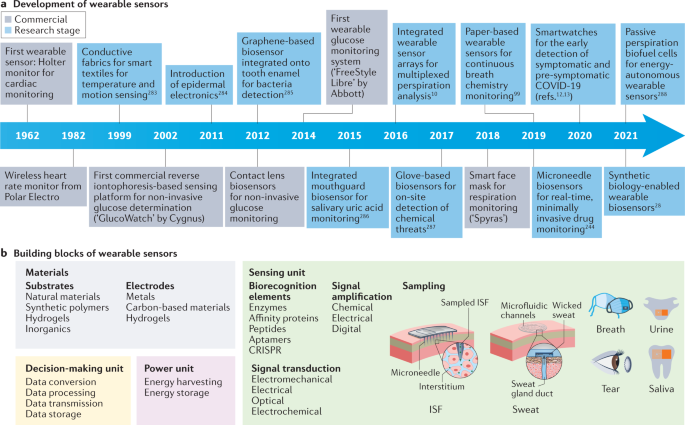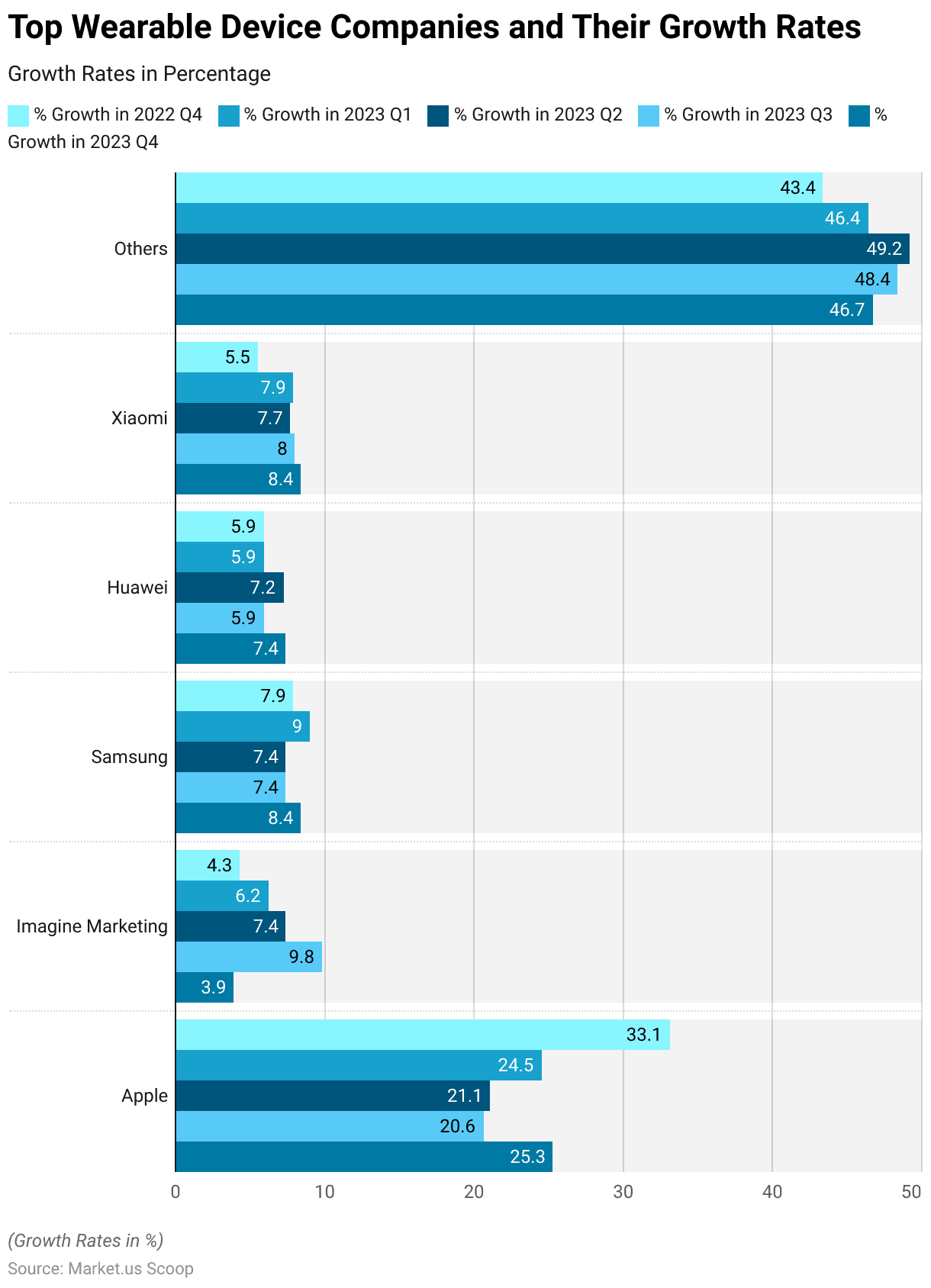Overview of Wearable Sensor Modalities

Wearable sensors are rapidly emerging technologies that integrate physical, chemical, and biological detection capabilities into portable devices. These devices can be found in everyday items such as smartwatches, fitness bands, tattoos, and even textiles, offering the possibility for real‐time, continuous monitoring of diverse physiological parameters. As outlined in a review on end‐to‐end design of wearable sensors, these devices are built from key components including substrate materials, sensing mechanisms, power modules, and decision‐making units that together provide detailed and temporally resolved information about an individual's health status[1].
Inertial Measurement Units
Inertial measurement units (IMUs) are electronic devices designed to measure and report a body's specific force, angular rate, and sometimes orientation, using a combination of accelerometers, gyroscopes, and magnetometers. IMUs are widely employed in a range of applications including vehicle navigation, unmanned aerial vehicles, and even smartphones and virtual reality headsets. These sensors form the core of many inertial navigation systems (INS), where the raw measurements are processed—often through methods like the Kalman filter—to estimate velocity, displacement, and attitude with high temporal resolution[3].
A key aspect of IMUs is their sensitivity and accuracy. Commercial units can range from gyroscopes with performance from 0.1°/s to 0.001°/h and accelerometers that vary from 100 mg to 10 μg. However, due to the process of integrating acceleration signals to compute velocity and position, even small measurement errors can lead to rapidly accumulating drift errors. These factors necessitate regular calibration and sophisticated error compensation strategies, which in turn impact both the design complexity and cost of the final integrated system[3].
Electrodermal Activity Sensors
Electrodermal activity (EDA) sensors measure variations in the electrical conductance of the skin and are primarily influenced by the activity of sweat glands and the autonomic nervous system. Historically known by various names such as galvanic skin response (GSR) and skin conductance response (SCR), these sensors capture subtle changes in skin conductance that correlate with psychological or physiological arousal. The underlying science suggests that as sympathetic arousal increases, sweat gland activity rises and, consequently, the electrical conductivity of the skin increases. This property provides a non-invasive proxy for emotional and stress responses[4].
The use of EDA is particularly prominent in research involving emotional states and cognitive stress, as well as in consumer gadgets like biofeedback and wellness devices. Because the signal is sensitive to external factors—such as temperature, humidity, and electrode placement—ensuring accuracy in real-world scenarios can be challenging. Calibration methods and specific preprocessing techniques are therefore crucial to reliably interpret the data provided by these sensors[4].
Biochemical Detectors
Biochemical detectors, although not elaborated in detail within the provided source materials, represent an exciting frontier in wearable sensor technology. These sensors are designed to monitor biochemical markers in real time, such as metabolites, hormones, or other biomarkers present in biofluids. The integration of such sensors into wearables can enable high-resolution, time-resolved historical recording of health parameters, potentially transforming clinical diagnostics. As echoed in the discussion of multimodal wearable sensors, the next generation of devices is expected to combine physical and biochemical sensing capabilities to provide a more comprehensive picture of an individual's health status[1].
The promise of biochemical detectors lies in their ability to monitor conditions such as glucose levels, electrolyte balance, or stress biomarkers continuously. Despite this potential, challenges such as sensor stability, biocompatibility, and maintaining accuracy over long periods remain areas of active research and development.
Accuracy, Cost, and Use Cases
Accuracy is a critical parameter that influences the utility of wearable sensors across different modalities. For inertial measurement units, the high sensitivity necessary for precise navigation comes at a cost; while high-performance IMUs require more sophisticated calibration and error corrections, low-cost units risk significant drift over short time spans due to error accumulation. IMUs are therefore common in applications ranging from consumer drones and smartphones to advanced unmanned systems, but their integration demands careful error management and compensation algorithms to maintain performance[3].
In contrast, electrodermal sensors are valued for their ability to capture rapid, subtle responses tied to emotional and autonomic states. Their use cases span psychological research, stress monitoring, and polygraph testing, though the influence of external conditions and innate sensor variability can complicate data interpretation. Cost considerations for EDA sensors tend to favor integration into consumer wearables, where low power consumption and the ability to miniaturize the sensor elements make them attractive for mass-market applications[4].
Biochemical detectors promise highly specific measurements of biomarkers, but they often require materials and techniques that are more expensive and potentially more cumbersome to integrate into a single device. Use case examples include non-invasive monitoring for diabetes management or tracking muscle fatigue in athletes, where the benefits of continuous biochemical monitoring outweigh the challenges of higher costs and integration complexity.
Integration Challenges and Future Directions
Integrating various sensor modalities into a single wearable platform introduces numerous technical challenges. One major issue is sensor fusion — combining data from IMUs, EDA sensors, and biochemical detectors to provide a coherent and accurate picture of the user's state. Each sensor type has its own calibration needs, error characteristics, and environmental sensitivities. For example, while IMUs require continuous drift correction and refinement through methods such as the Kalman filter, EDA sensors must manage variability due to skin conductance changes that can vary with electrode placement and external conditions[3][4].
Another integration challenge lies in maintaining low power consumption and ensuring reliable wireless communication, especially in devices intended for continuous, everyday use. The trade-offs between cost, device size, battery life, and signal processing requirements must be carefully balanced. Looking forward, continued advancements in sensor materials, microfabrication techniques, and data analytics are expected to reduce these challenges, making it feasible to produce even more accurate, low-cost, and user-friendly multi-modal wearable sensors. Future generations of wearables are anticipated to harness advances in biochemical detection alongside established IMU and EDA modalities to offer unprecedented insights into health and wellbeing[1].
Get more accurate answers with Super Pandi, upload files, personalized discovery feed, save searches and contribute to the PandiPedia.
Let's look at alternatives:
- Modify the query.
- Start a new thread.
- Remove sources (if manually added).




